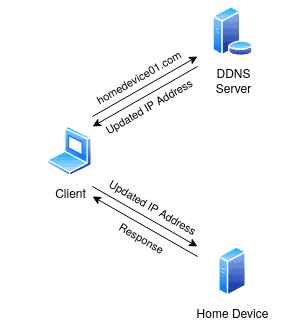1. Overview
DNS servers map domain names to their corresponding IP address, so it’s easier for humans to access websites by their names instead of their IP addresses.
In this short tutorial, we’ll learn what a DDNS (Dynamic Domain Name System) is and how it’s different from a standard DNS.
2. What Is DNS?
DNS stands for Domain Name System. DNS servers make it easier for humans to access websites by storing domain names and their corresponding IP addresses.
Each time a DNS server is given a domain name, it goes through its database to find a matching IP address for the given domain name:

In a standard DNS server, the IP addresses are static, which means they don’t change over time.
3. What Is DDNS?
DDNS stands for Dynamic Domain Name System. Unlike standard DNS servers, dynamic DNS servers work with dynamic IP addresses, which means they constantly change over time. Furthermore, dynamic IP addresses are assigned by a DHCP server.
A dynamic DNS server automatically updates the IP addresses in its database every time they change:

In addition, dynamic DNS lets us communicate with devices in our homes since home devices have dynamic IP addresses.
4. Summary
In this short tutorial, we learned about DDNS and how it’s different from a standard DNS server.